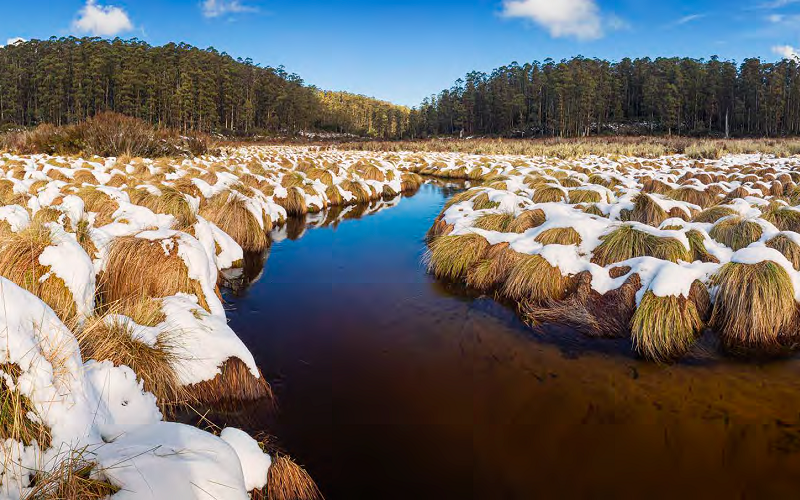Mines over water: Melbourne’s largest and most important water supply catchment at risk
November 17, 2025
On 21 October 2025, the Victorian Government announced plans to protect Melbourne’s water supply catchments – the systems that deliver clean water to over five million people. It was welcome news for Australia’s largest and fastest growing city.
But the Victorian Government made a glaring omission: the Thomson catchment – the largest and most important of them all.
The government has proposed to expand the Yarra Ranges National Park to include the Yarra Tributaries Forest Reserve, encompassing Cement Creek, Armstrong Creek, Starvation Creek and McMahons Creek catchments. These are small tributaries, comprising only a fraction of Melbourne’s water supply. In contrast, the Thomson catchment holds nearly 60% of the city’s total water in its reservoir. Yet more than 90% of the Thomson’s 47,162 ha remains unprotected.
This omission is difficult to justify. The government’s own Eminent Panel for Community Engagement recommended that the entire Thomson catchment be protected within national and forest parks. That advice has been ignored.
Why exclude the Thomson?
A clue may lie in the Victorian Environment Assessment Council’s 2023 report, which described the Thomson catchment’s forests as having “outstanding natural values commensurate with a national park designation”. However, VEAC also identified a “high level conflicting uses” in the Thomson catchment – most notably, “mineral extraction”.
Large portions of the catchment sit under “current Exploration Licences or applications for Exploration Licences”, almost all for gold. VEAC explicitly stated that mineral extraction was “incompatible” with a national park. The government’s refusal to protect the Thomson catchment therefore raises a serious question: is Melbourne’s most important drinking-water source being left vulnerable to enable gold mining?
The risks of mining in water catchments
Gold mining is well-documented to cause soil erosion, degradation and water contamination of waterways. Across Australia and globally, numerous studies have modelled and recorded the risks mining poses to water quality.
The consequences are not hypothetical. In Orange, New South Wales, the ABC reported that a gold mine confirmed leaks from its waste storages, sparking fears of widespread groundwater contamination in surrounding farmland. A similar event in the Thomson catchment would be catastrophic – compromising the drinking water of millions of people and threatening Melbourne’s long-term water security.
A once-in-a-generation opportunity
For decades, Victorian governments have recognised the importance of protecting water catchments. The Maroondah, O’Shannassy, Wallaby Creek and Upper Yarra catchments were all closed to industrial resource extraction such as logging, ensuring clean and reliable water for Melbourne.
When the Andrews Government closed the state logging agency VicForests, it presented a once-in-a-generation opportunity to permanently protect the Thomson catchment along with other water catchments within unprotected state forests that service Melbourne.
Yet the current Allan Labor Government has so far failed to seize this opportunity. By disregarding its own expert panel and leaving the Thomson open to exploitation, it risks undermining Melbourne’s most fundamental natural asset – clean water.
This is not just a Victorian issue: in NSW, longwall mining in the Greater Sydney Water Catchment Special Areas has warranted an independent expert panel to assess risks to water yield, while in WA bauxite mining occurs within Perth’s water-supply catchments, with recent expansion proposals prompting warnings from the state water utility.
If the government’s priorities now favour mining interests over the protection of critical water infrastructure, Victorians — and Australians more broadly — have every reason to be concerned.
In a drying continent facing more extreme droughts, protecting high-yield forested catchments is a matter of national security, not just state policy.
This issue also intersects with national commitments under the National Water Initiative, which commits governments to sustainable water planning and urban water security, and the Nature Positive Plan to set National Environmental Standards and use regional planning. The federal government has a stake in ensuring major urban water supplies are protected from extractive pressures.
If mining can proceed in the catchment of Australia’s largest city, no community’s water supply can be considered safe.
The views expressed in this article may or may not reflect those of Pearls and Irritations.
The Thomson River upstream of the Thomson reservoir in unprotected state forest. Photo – Chris Taylor
